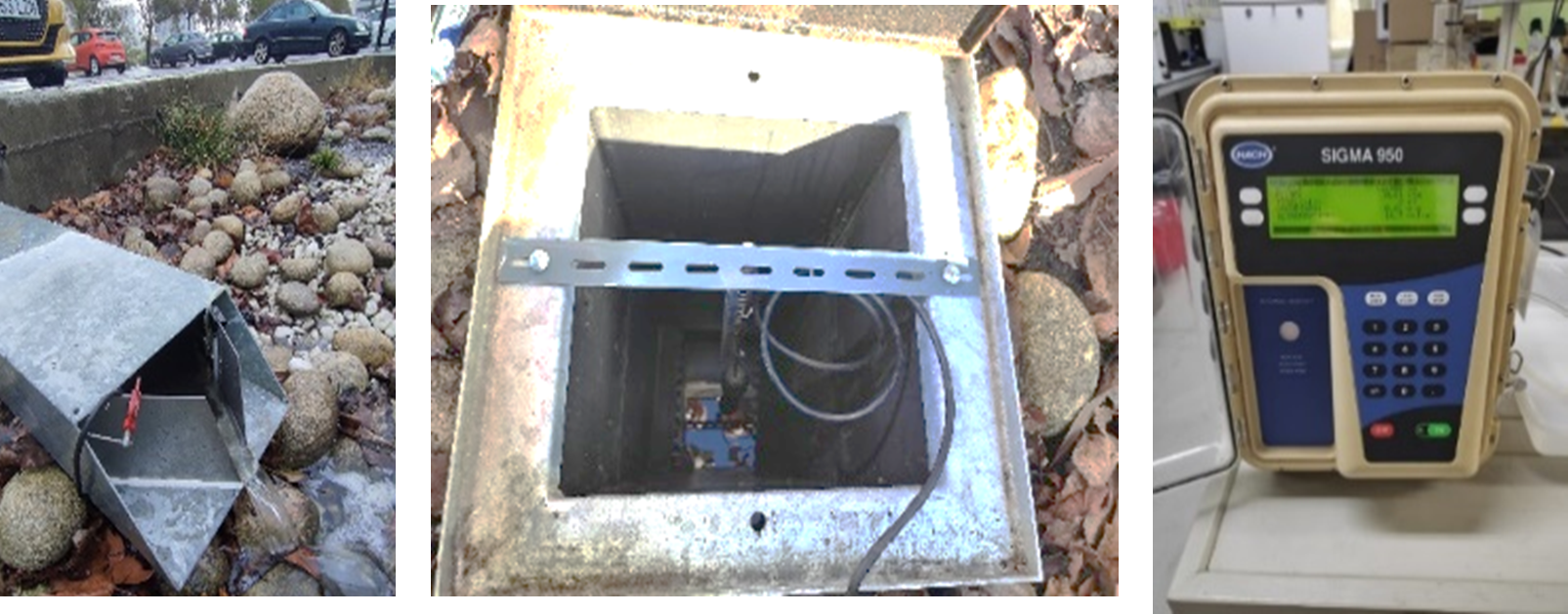As part of the implementation of SUDS techniques in the SCS, the GEAMA research group of the UDC has been developing an exploitation and monitoring plan for the Green Infrastructures-GI techniques that involves: i) setting routine operation and maintenance guidelines to extend their life service and improve their ecological and functional value, and ii) setting performance operating indicators guidelines.
Regarding the definition of GI performance, 4 general parameters will be taken into account:
1. Hydrological parameters:
installation of a rain gauge near the techniques. This will allow a high frequency temporal information of rainfall events (at minute scale).
2. Hydraulic parameters at the technique:
Inlet - Raw water: the units are equiped with a by-pass and a H-flume that combined the flow sensitivity of a narrow angle V-notch weir with the flat floor and self-cleaning properties of a rectangular flume (Figure 1 a); an area-velocity flowmeter will be installed to determine flow discharge. Furthermore, ultrasonic water level sensors will be installed to determine the surface water level, as well as water height in the bioretention area, to control emptying processes of the technique (Figure 1b). These data will be recorded using a SIGMA flowmeter (Figure 1 c).

Figure 1.(a) H-Flume, (b) Water level sensor and (c) SIGMA flowmeter - GEAMA.
Outlet - Treated water: in order to close the mass balance, the outflow discharge will be measured.
3. Water Quality parameters:
Up to eight storm events over the monitoring period may be analized. Initially, a full intra-event characterization of stormwater will be performend at sustainable drainage system techniques (about 6 -10 samples per event). Due to the detention-biofiltration effect in the techniques, the outflow pollution peaks are damped, and thus flow-wighted composite samples will be recorded. Automatic samplers will allow to perform inflow-outflow monitoring of selected pollutants such as heavy metals, PAH, nutrients, pathogens, oils and fats, and microplastics. Conventional water quality parameters (pH, conductivity, turbidity) will be determined using online probes.
All hydrological-hydraulic and online water quality parameters will transferred online to a database using a wireless communication board connected to GEAMA database.
4. Road-Deposited Sediments (RDS) characterization:
In order to know the composition and particle size distribution of the street sediment, a serie of campaigns will be carried out to collect through sweeping and vacuuming the accumulated RDS (1 sampling/month/area). The strategic areas wiil be located into the the lorries parking areas and cars parking areas (e.g., road ditches and curbs).
Finally, this set of parameters and data will allow us to generate hydrographs and polutograms to analyze the performance, environmental life cycle and technical-economic evaluation of the WATERUN methodology for urban runoff management using GI.
Authors: Angélica Goya: angelica.goya@udc.es; Joaquín Suárez: joaquin.suarez@udc.es; Jose Anta: jose.anta@udc.es; Alfredo Jácome: alfredo.jacome@udc.es - Universidade Da Coruña -(19/10/2023)